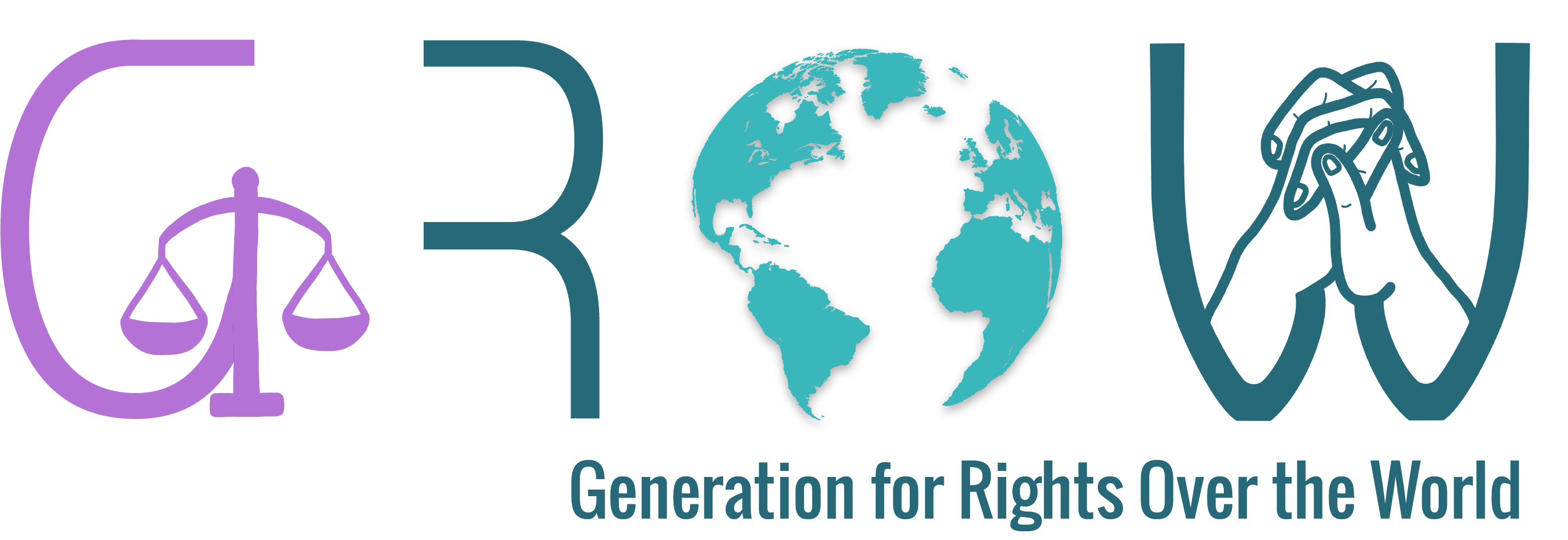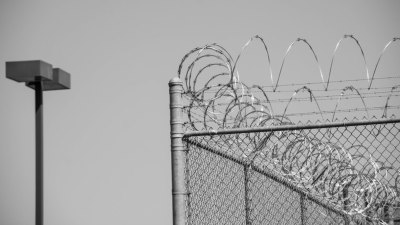Since Friday, May 7th, clashes between Palestinians and Israeli armed forces have resulted in numerous injuries in East Jerusalem. These clashes follow the Jerusalem District Court’s decision on May 2nd to evict six Palestinian families from their homes in Sheikh Jarrah on Sunday of the same week, despite the fact that these families have lived in the neighbourhood for generations. Sheikh Jarrah is a neighbourhood in East Jerusalem that has been illegally occupied by Israel since 1967. For years, the residents of this neighbourhood have struggled tirelessly to avoid eviction. In October 2020, this same court forced the eviction of twelve Palestinian families from Sheikh Jarrah. The aim is to make way for Jewish settlers and turn the area into a purely Jewish neighbourhood. The court also ruled that seven more families should leave their homes by August 1st, 2021. In total, about 70 families are threatened by these evictions. This means that more than 200 people, including about 100 children, are about to be forcibly displaced.
History of the conflict in Sheikh Jarrah
In 1956, 28 Palestinian refugee families were expelled from their homes in the coastal cities of Yafa and Haifa by Zionist occupiers and moved to the Palestinian neighbourhood of Sheikh Jarrah in East Jerusalem, then under Jordan’s mandate. In response, several Jewish settler organisations filed a lawsuit against Palestinian families living in Sheikh Jarrah in 1972, claiming that the land originally belonged to Jews. These groups, funded primarily by U.S. donors, have waged a bitter struggle that has resulted in the eviction of approximately 100 Palestinians since 2002.
This occurred as the West Bank, including East Jerusalem, which was under Jordan’s mandate, entered into an agreement with the United Nations Refugee Agency (UNHCR) to build housing for those families expelled from their homes. The agreement stipulated that families would give up their refugee status in exchange for land titles signed on their behalf after three years of living in Sheikh Jarrah. However, this did not happen and in 1967, Jordan lost its mandate as East Jerusalem was illegally invaded and occupied by Israel. In an article written for Al Jazeera1, Khalil Toufakji, a Palestinian cartographer and Jerusalem expert, said he traveled to Ankara in 2010 to search Ottoman-era archives for a document that denies any Jewish ownership of Sheikh Jarrah:
“I found the deed and presented it to the Israeli district court, which quickly dismissed it.”
Khalil Toufakji FOR Al Jazeera, May 2021 (free translation).
Furthermore, in 1968, the Knesset2 ruled that Israel was bound by the agreement of Jordan and the United Nations Refugee Agency. Therefore, there is no legal or historical reason behind these expulsions. The information was submitted to the Jerusalem High Court on behalf of the Palestinian families in Sheikh Jarrah. However, since Israeli courts serve Jewish settlers, there is little chance that the court will rule in favor of Palestinian families threatened with eviction.
Legal perspective
Sheikh Jarrah is located in East Jerusalem, a part of the city considered occupied territory by the United Nations (UN). The United Nations Security Council Resolution 4783 presents the Israeli annexation of this part of Jerusalem as a violation of international law. The UN again reiterated that these evictions are contrary to international law and constitute war crimes.
Under international law, the Israeli judicial system has no legal authority over the Palestinian population in the occupied territories. Last month, Palestinian human rights groups appealed to the United Nations to denounce Israel’s discriminatory legal basis as evidence of an apartheid regime that disadvantages Palestinians. Apartheid is a regime of systematic segregation that existed in South Africa and Namibia until 1991 between the white and black communities.
Israel has indeed extended its legal authority to illegally occupied East Jerusalem, but the Jewish state has also adopted more discriminatory laws and policies imposing the confiscation of Palestinian property in favor of settlers. For Fayrouz Sharqawi, Director of Global Mobilization for Grassroots Jerusalem, “this system is an integral part of the Zionist colonial state, which identifies itself as a ‘Jewish state’ and therefore systematically oppresses, dispossesses and displaces Palestinians”4.
History of events since Friday, May 7th
Following the decision of the Jerusalem District Court on May 2nd, daily and nightly demonstrations are taking place in the Sheikh Jarrah neighbourhood against the eviction of Palestinian families in favor of Jewish settlers. However, violence broke out after Israeli police officers threw stun grenades and fired rubber bullets at the crowd to disperse protesters. The Israeli armed forces also attempted to disperse the tens of thousands of Muslim worshippers who had gathered on the Temple Mount5 for the last big Friday prayer marking the end of the month of Ramadan, in order to prevent them from joining the demonstrators of the neighbouring district. Resulting from this violence, more than 200 people were injured. Agence France-Presse reported that Israeli settlers were seen in Sheikh Jarrah brandishing assault rifles and guns before the clashes with police6.
The next day, the international community reacted and called for a cessation of hostilities. Last April, about 200 associations had already written a letter to the prosecutor of the International Criminal Court, Fatou Bensouda, calling for an investigation into the forced evictions of families in Sheikh Jarrah as part of her ongoing investigation into war crimes and crimes against humanity in Palestine. Fatou Bensouda confirmed in her statement of March 3rd, 20217, “the initiation by the Office of the Prosecutor of the International Criminal Court of an investigation into the situation in Palestine”. Following the decision of the Pre-Trial Chamber I, by majority, that the jurisdiction of the Court extends to the Situation in Palestine, of February 5th, 2021. In recent weeks, #SaveSheikhJarrah has been circulating on social networks, aiming to raise awareness and international interest around the forced evictions of Palestinian families in East Jerusalem. Palestinian activists have also called on world leaders and human rights advocates to pressure Israel to stop what they see as an “ongoing Nakba8” in Sheikh Jarrah. The United States and the European Union have also called for a “de-escalation” of tensions and have asked the Israeli authorities to avoid the expulsion of Palestinian families.
But these calls for calm are not enough. On Saturday evening, new violence broke out in several areas of East Jerusalem between Israeli police and Palestinian demonstrators, leaving more than 90 people injured. In the Sheikh Jarrah, Damascus Gate and Bab Al-Zahra areas, Israeli police threw sound grenades and fired rubber bullets at the crowd once again. They even used a putrid water cannon to disperse protesters. In response, protesters threw rocks and other types of small projectiles at the Israeli police. According to the police, one policeman was injured in the head. Some of the protesters were also arrested.
The Israeli judiciary declared on Sunday, May 9th, that the hearing scheduled for the following day, which was to announce the verdict on the fate of the Palestinian families threatened with expulsion in Sheikh Jarrah, was postponed. In a statement, the Israeli Ministry of Justice said: “In light of the current context, and at the request of the Attorney General, the hearing scheduled for tomorrow has been cancelled”9. He said a new date would be announced later this month.
On Monday, May 10th, the Esplanade of the Mosques was the victim of a fire cheered by a crowd of Israeli settlers. Hamas fired dozens of rockets from the Gaza Strip in response to Israeli violations of international law. The Israeli air force retaliated, killing 20 people, including 9 children, the Palestinian Ministry of Health announced. Rupert Colville, spokesman for the Office of the UN High Commissioner for Human Rights, said: “We condemn all violence and incitement to violence, as well as ethnic divisions and provocations”10, during a meeting at the UN in Geneva on May 7th. On Tuesday, May 11th, Israeli air raids destroyed everything, including a charity building in the town of Deir el-Balah in the Gaza Strip. Many people were injured and 32 died. Jean-Baptiste Lemoine, Secretary of State for Tourism, French Nationals Abroad and the Francophonie, declared before the French Parliament on the same day: “France has always condemned the acceleration of the colonization process […] we condemn the firing of rockets from the Gaza Strip and we call on the Israeli authorities to use proportionate force”. However, for the parliamentary opposition, these statements are not enough. Elsa Fucillon said that “the silence of our country participates in the impunity in which Israeli abuses take place”11.
Since Wednesday, May 12th, the Israeli army has continued its air attacks on the Gaza Strip, in which some two million inhabitants, who have been cloistered for fifteen years, cannot escape because of an embargo. Following these events, China, Norway and Tunisia called for a crisis meeting of the United Nations Security Council on May 14th, but the United States opposed it. On the official Twitter account of its army, the IDF (Israeli Defense Forces) or Tsahal, the Hebrew state shares its propaganda and praises its air strikes, which have destroyed neighbourhoods, civilian buildings, schools, hospitals, orphanages, mosques and even religious convents. In its tweets, the Israeli army tries to justify its attacks on civilian buildings, while providing no concrete evidence. It justifies its bombings with the assumption that Hamas would hide weapons in these buildings, just as G. W. Bush had justified the invasion of Iraq in 2003.

On May 15th, the IDF, the Israeli army, targeted in an air strike the Al Jalaa building in Gaza, which housed Al Jazeera, Associated Press journalists and apartments. The building was hit by at least four rockets. The Associated Press described the attack as “the latest step by the army to silence reporting from the territory in the midst of its battle with the militant group Hamas”12. The attack caused the death of 10 people, mainly children. In addition, Palestinians from Gaza denounced the use of toxic gas on the population by the IDF, such as white phosphorus. The use of white phosphorus was prohibited by the UN in 1983. Its use is classified as a war crime. Many people living in Gaza have witnessed a ‘garlic’ smell in the streets caused by white fumes, characteristic of this gas. However, the Israeli army denied the use of this gas.
Abroad, numerous demonstrations in support of the Palestinian people took place, notably in France. In Paris, the demonstration was banned and reprimanded by the authorities following an arbitrary decision by the Minister of the Interior Gérald Darmanin. A total of 51 arrests were made, including 44 in Paris, announced the Minister of the Interior on his Twitter account13.

In the rest of the country, demonstrations were attended by more than 22,000 people and went smoothly. On Tuesday, May 18th, Palestinians from the West Bank, Gaza and Israel are participating in a major protest strike against the occupation and bombing of Gaza.
 |
 |
Photos Rally for Palestine in Lille, Saturday 15th of May 2021 by Elias Khoury.
Human toll
In total, as of May 18th, at least 213 Palestinian civilians have been killed in Gaza, including more than 50 children, and more than 1500 have been injured. In the West Bank, 17 civilians were killed and over 500 injured. In East Jerusalem, there was one death and 23 arrests of Palestinian activists. On the Israeli side, there were 11 deaths, including “2 Israeli Arabs”. It is difficult to count the real injured on the Israeli side, because among the more than 200 declared, Israel counts the “psychological injured” in order to inflate its figures. Finally, between the night of May 13th and 14th, Israel will have killed more people in Gaza than the rockets of Hamas in 20 years.
A strategy of occupation: the “Greater Jerusalem”
Israel’s annexation of East Jerusalem is largely unrecognized by the international community. Israel’s settlement project, which aims to consolidate Israeli control over the whole of Jerusalem, is also considered illegal under international law:
“For the purposes of the Statute, ‘war crimes’ means: […] The transfer, directly or indirectly, by an occupying power of parts of its own civilian population into the territory it occupies, or the deportation or transfer within or outside the occupied territory of the whole or part of the population of that territory”14.
Approximately 200,000 Israeli citizens live in East Jerusalem under the protection of the Israeli army and police, with the largest single settlement complex15 housing 44,000 Israelis. Unfortunately, Sheikh Jarrah is just one example of what is happening in the Palestinian neighbourhoods of Jerusalem in terms of forced displacement and evictions.
According to Toufakji, East Jerusalem experienced the highest rate of Israeli settlement expansion ever recorded in 2020. In fact, 170 Palestinian structures were demolished, including 105 homes, resulting in the displacement of 385 people. Israel’s policies of arrests, structure demolitions, land confiscations and forced displacement are all in line with the Israeli government’s “demographic balance” in Jerusalem, which limits the Palestinian population in the city to 30% or less for 70% or more Jews.
This plan has been in place since 1973, when then-Prime Minister Golda Meir gave the green light to the Gavni Committee, which aimed to achieve and maintain this balance between the Palestinian and Jewish populations. In 1990, Ariel Sharon, then Minister of Housing Construction, launched plans to build settlement blocks in the middle of Palestinian neighbourhoods in Jerusalem, in order to encircle, fragment and disperse Palestinian residents. All of these policies are in line with Israel’s so-called “Greater Jerusalem” plan, which aims to cut off the surrounding Palestinian neighbourhoods of East Jerusalem from the city through the separation barrier and the annexation of surrounding Jewish settlements. As a result, some 140,000 Palestinians in Jerusalem live outside the separation barrier and are prevented from entering it. The Israeli authorities have also set up checkpoints to limit access to the city.
Residents of several Palestinian neighbourhoods in East Jerusalem are also threatened with forced displacement. For example, the al-Bustan area in Silwan, south of the Old City, has 119 families living in 88 buildings threatened with demolition to make way for the construction of an Israeli archaeological park. Or in Wadi Yasul, where 84 houses are also at risk of demolition to make way for the expansion of an Israeli national park. And in Batan al-Hawa, 700 people are expected to be forcibly displaced because the settler group Ateret Cohanim has declared that Jews used to live there. As these latest provocations have shown, Israel is a colonial machine that knows no truce.
To quote the article:
KHOURY, E. (2021). #SaveSheikhJarrah. Generation for Rights Over the World. growthinktank.org. [online] May 2021.
Acknowledgements
We thank Jeanne Pavard, Cassandra Mazzolini and Samantha Frary–Aubert for their review.
| ↑1 | ALSAAFIN, L. (2021). What is happening in occupied East Jerusalem’s Sheikh Jarrah?. Al Jazeera. [Online] 1 mai 2021. Available at: https://www.aljazeera.com/news/2021/5/1/what-is-happening-in-occupied-east-jerusalems-sheikh-jarrah [Accessed 11 May 2021]. |
|---|---|
| ↑2 | Israeli parliament. |
| ↑3 | This United Nations resolution, adopted on August 20, 1980, calls on Israel to end its occupation of Jerusalem. It also calls for an end to changes in the legal and geographical character of the city. |
| ↑4 | Free translation from: ALSAAFIN, L. (2020). Eviction of Palestinians in Sheikh Jarrah part of Israeli policy. Al Jazeera. [online] 29 Nov. Available at: https://www.aljazeera.com/news/2020/11/29/eviction-of-palestinians-in-sheikh-jarrah-part-of-israeli-policy [Accessed 12 May. 2021]. |
| ↑5 | The Temple Mount is the third-holiest place in Islam. It is also called the Temple Mount by the Jews. |
| ↑6 | DUNAND, E. (2021). Silence is not an option in east Jerusalem for Palestinians. France 24. [Online] 9 may 2021. Available at: https://www.france24.com/en/live-news/20210509-silence-is-not-an-option-in-east-jerusalem-for-palestinians [Accessed 11 May 2021]. |
| ↑7 | N.D. (2021) Palestine : la Procureure de la CPI confirme l’ouverture d’une enquête. ONU Info. [Online] 3 Mar. Available at: https://news.un.org/fr/story/2021/03/1090822 [Accessed 12 May 2021]. |
| ↑8 | The Nakba, “Catastrophe” in Arabic, corresponds to the exodus and forced displacement of 700,000 Palestinians when the State of Israel was created in 1948. |
| ↑9 | Israeli Ministry of Justice press release, May 9, 2021. |
| ↑10 | N.D. (2021). Press briefing notes on Occupied Palestinian Territory. OHCHR. 7 mai 2021. [Online] Available at: https://www.ohchr.org/EN/NewsEvents/Pages/DisplayNews.aspx?NewsID=27067&LangID=E [Accessed 11 mai 2021]. |
| ↑11 | FUCILLON, E. (2021). Questions au gouvernement – 11 mai 2021. LCP Assemblée Nationale. Available at: https://twitter.com/lcp/status/1392106911827472388?s=21 [Accessed 11 May 2021]. |
| ↑12 | AKRAM, F. KRAUSS, J. (2021). Israel strikes Gaza home of Hamas leader, destroys AP office. Associated Press. 15 mai 2021. [Online] Available at: https://apnews.com/article/israel-west-bank-gaza-middle-east-israel-palestinian-conflict-7974cc0c03897b8b21e5fc2f8c7d8a79 [Accessed 16 May 2021]. |
| ↑13 | Translation of the tweet : We thank the police officers and constables that were mobilised today, with 4200 of them present in Paris this afternoon. Many were targeted, including a constable injured in Paris. 51 arrests were made, with 44 in Paris. Force must remain with the law. |
| ↑14 | Article 8 (2)(b)(VIII) of the Rome Statute of the International Criminal Court. |
| ↑15 | The complex is inhabited only by Jews. |







